 1983 Ford Sierra Hatchback I Dimensions, Size & Specs
1983 Ford Sierra Hatchback I Dimensions, Size & SpecsMeasurements of the 1983 Ford Sierra Hatchback I, engineered for optimal performance and comfort
| Dimensions | |
|---|---|
| Length: | 4425 mm174.2 in14.5 ft |
| Width: | 1694 mm66.7 in5.6 ft |
| Height: | 1407 mm55.4 in4.6 ft |
| Weight Specifications | |
| Curb Weight: | 1160-1600 kg2557-3527 lbs |
The Ford Sierra Hatchback I, launched in 1983 and produced between 1982 and 1989, represents a compact yet spacious vehicle of its era. This first-generation hatchback features a length of 4425 mm (174.2 inches), offering a balanced footprint suitable for both urban and highway use. With a width of 1694 mm (66.7 inches) and a height of 1407 mm (55.4 inches), the car provides a low aerodynamic profile typical of the mid-80s design ethos. The hatchback body style enhances versatility, catering to drivers seeking a practical yet stylish vehicle. The curb weight of the Sierra Hatchback I varies between 1160 kg and 1600 kg (2557 - 3527 lbs), reflecting different engine and trim configurations available during its production span. Overall, the Ford Sierra Hatchback I blends dimensions that balance interior space and external compactness, making it a notable choice in the compact hatchback segment of the 1980s. Its size and weight contribute to a driving experience that was considered nimble and efficient for its time, fitting well within the family car category and competitive in size against other European hatchbacks of the period.
Discover the standout features that make the 1983 Ford Sierra Hatchback I a leader in its class
Have a question? Please check our knowledgebase first.
The Ford Sierra Hatchback I, produced between 1982 and 1989, features the following exterior dimensions: a length of 4425 mm (174.2 inches), a width of 1694 mm (66.7 inches), and a height of 1407 mm (55.4 inches). These measurements position the Sierra as a compact to mid-size hatchback, providing a practical combination of interior space and urban maneuverability. The size made it suitable for the family car segment at the time, balancing cabin comfort with ease of handling and parking in tight European city environments.
The Ford Sierra Hatchback I's width of 1694 mm (66.7 inches) was designed to offer a balance between interior space and compactness. This width allows the vehicle to easily navigate narrow urban streets and parking spaces, a significant advantage in European cities. Additionally, the car's width contributes to good highway stability, providing a confident road presence without making the vehicle unwieldy or difficult to park. This dimension aligns with the mid-size hatchback class standards of the 1980s, offering drivers practicality without compromising comfort.
The 1983 Ford Sierra Hatchback I stands at a height of 1407 mm (55.4 inches). This relatively low roofline contributes to a sleek, aerodynamic profile that was quite advanced for its time, helping to reduce drag and improve fuel efficiency. In terms of interior headroom, while the height is modest compared to taller vehicles, it adequately accommodates average adult passengers comfortably, especially important for front and rear seating spaces in a hatchback body style. The design balance ensured both a sporty appearance and practical interior comfort.
The Ford Sierra Hatchback I has a curb weight ranging from approximately 1160 kg to 1600 kg (2557 to 3527 pounds), depending on the specific engine and trim level. This weight range reflects the variety of engine options and equipment levels offered during its production years from 1982 to 1989. Lighter versions generally provide more nimble handling and better fuel economy, while heavier variants, often equipped with larger engines or additional features, yield improved comfort and power at the cost of fuel consumption. Overall, the weight was fairly competitive in its class, balancing performance and efficiency.
Yes, the Ford Sierra Hatchback I fits comfortably into a standard residential garage. With a length of 4425 mm (174.2 inches), a width of 1694 mm (66.7 inches), and a height of 1407 mm (55.4 inches), the car is smaller than typical garage dimensions in most regions, which often start at around 4800 mm (189 inches) in length and 2400 mm (94 inches) in width. This means there is sufficient clearance around the vehicle for opening doors and maneuvering without difficulty. The Sierra’s moderate size made it practical for everyday use in typical urban and suburban homes during the 1980s and beyond.
The Ford Sierra Hatchback I marked a significant design departure and size adjustment compared to its predecessor, the Ford Taunus. The Taunus, particularly in its late 1970s variants, was generally larger in some dimensions but retained a more traditional boxy sedan and coupe style. The Sierra's length of 4425 mm (174.2 inches), with its aerodynamic hatchback design, was more tapered and modern, offering improved fuel efficiency and handling. The width of the Sierra at 1694 mm (66.7 inches) was generally similar to the Taunus, but the Sierra's height was lower at 1407 mm (55.4 inches), contributing to a sportier and more contemporary visual profile and better aerodynamics.
Compared to other popular 1980s hatchbacks like the Volkswagen Golf Mk2 or Opel Kadett E, the Ford Sierra Hatchback I was slightly longer and a bit wider, standing at 4425 mm (174.2 inches) in length and 1694 mm (66.7 inches) in width. For example, the Golf Mk2 measured around 3970 mm (156.3 inches) long, making the Sierra notably larger, thus providing more interior space and comfort. However, the Sierra maintained a relatively low height at 1407 mm (55.4 inches), contributing to a sportier look than some rivals. This size advantage positioned the Sierra comfortably in the mid-size segment, appealing to customers seeking a hatchback with extra room and style.
The Ford Sierra Hatchback I typically accommodates five passengers, featuring a 2+3 seating layout, which was standard for hatchbacks of its size during the 1980s. The hatchback design allows for flexible cargo configurations; rear seats can be folded down to provide increased cargo volume, useful for transporting larger items. Although exact cargo volume measurements vary by trim and year, the hatchback's design prioritized practicality and versatility, making it suitable for family use, daily commuting, and occasional larger loads. This flexibility was one of the Sierra's key appeals in its segment.
Throughout its production from 1982 to 1989, the Ford Sierra Hatchback I was offered with a variety of petrol and diesel engines designed to appeal to a broad range of drivers. Petrol engines ranged from economical four-cylinder units to more powerful options including 2.0- and 2.3-liter variants. Diesel engines were also available, popular for their fuel efficiency. Performance varied significantly depending on the chosen engine, with horsepower outputs typically between approximately 50 hp to 150 hp in sportier models. The Sierra's rear-wheel-drive setup and aerodynamic body contributed to good driving dynamics for the era.
The Ford Sierra Hatchback I was notable for its aerodynamic design when launched in the early 1980s, featuring a sleek shape that was quite revolutionary compared to the boxier cars it replaced. This focus on aerodynamics improved fuel efficiency by reducing drag and enhanced high-speed stability, which appealed to buyers amid rising fuel costs and environmental awareness. The design generated mixed initial reactions due to its futuristic styling but ultimately helped the Sierra carve out a distinctive market presence and contribute to Ford's success in the mid-size hatchback segment across Europe during the 1980s.
Discover similar sized cars.
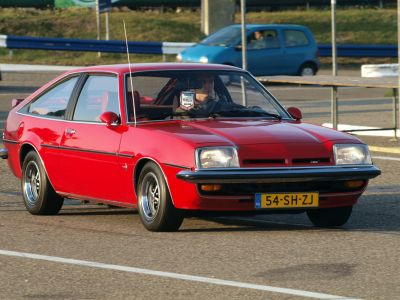
| Production: | 1977-1983 |
|---|---|
| Model Year: | 1978 |
| Length: | 4376 mm172.3 in |
| Width: | 1670 mm65.7 in |
| Height: | 1340 mm52.8 in |
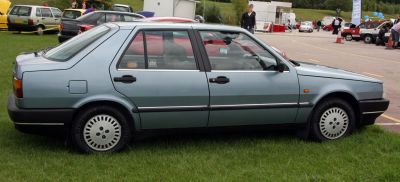
| Production: | 1985-1996 |
|---|---|
| Model Year: | 1986 |
| Length: | 4520 mm178.0 in |
| Width: | 1760 mm69.3 in |
| Height: | 1435 mm56.5 in |
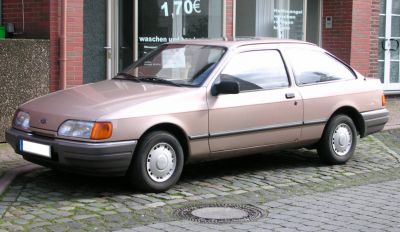
| Production: | 1987-1993 |
|---|---|
| Model Year: | 1987 |
| Length: | 4425 mm174.2 in |
| Width: | 1694 mm66.7 in |
| Height: | 1407 mm55.4 in |
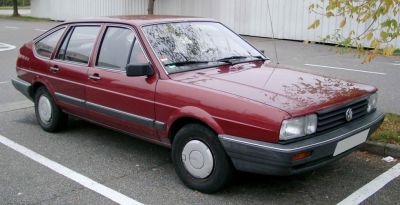
| Production: | 1985-1988 |
|---|---|
| Model Year: | 1985 |
| Length: | 4425 mm174.2 in |
| Width: | 1710 mm67.3 in |
| Height: | 1385 mm54.5 in |
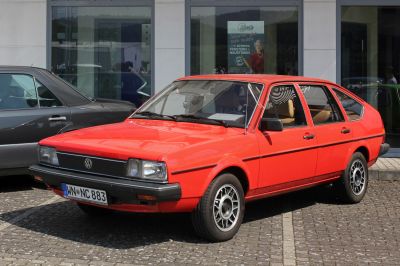
| Production: | 1980-1988 |
|---|---|
| Model Year: | 1981 |
| Length: | 4435 mm174.6 in |
| Width: | 1685 mm66.3 in |
| Height: | 1385 mm54.5 in |
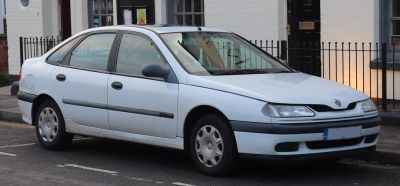
| Production: | 1993-2002 |
|---|---|
| Model Year: | 1994 |
| Length: | 4510 mm177.6 in |
| Width: | 1752 mm69.0 in |
| Height: | 1430-1442 mm56.3-56.8 in |
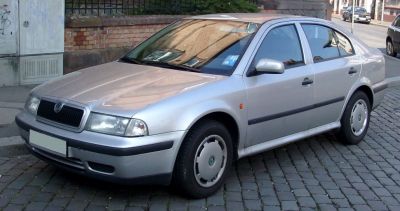
| Production: | 1996-2000 |
|---|---|
| Model Year: | 1996 |
| Length: | 4511 mm177.6 in |
| Width: | 1731 mm68.1 in |
| Height: | 1429-1730 mm56.3-68.1 in |
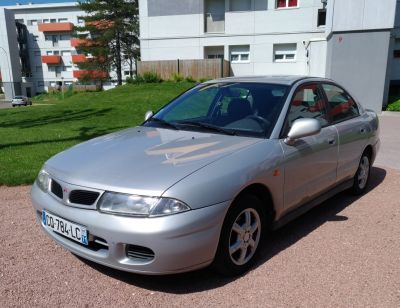
| Production: | 1995-2003 |
|---|---|
| Model Year: | 1995 |
| Length: | 4445-4475 mm175.0-176.2 in |
| Width: | 1710 mm67.3 in |
| Height: | 1405 mm55.3 in |
